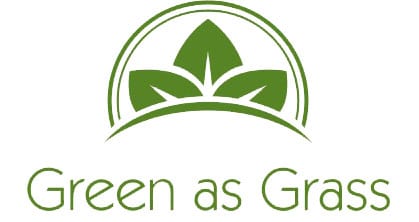Preparing your artificial lawn for winter
An artificial lawn is considerably lower maintenance than a natural lawn. However, that doesn’t mean that it’s “no” maintenance. To keep it looking good and performing well for as many years as possible, there are a new seasonal tasks that need doing.
1) Remove Autumn Leaves And Garden Debris
It’s obvious why you need to remove autumn leaves from a natural lawn. That thick coating of decaying material blocks the light and suffocates the grass plants. But artificial grass is not alive. Autumn leaves won’t kill it, so why do you need to remove them?
Have you ever noticed what happens if leaves fall on to a pavement or patio and are not swept up? They turn into a slushy slimy mess for a while, then if the rain does eventually wash them away the chances are they’ve left a nasty discoloured stain on the surface. If they don’t get washed away, they decompose and turn into leafmould. Leafmould is a fabulous growing material and will soon be colonised by weeds.
If you have invested in a good quality artificial lawn, the last thing you want is for it to become unsightly. A traditional spring tine rake is too harsh to use on synthetic grass or astro turf but autumn leaves are easily removed with a leaf blower or garden vacuum.
2) Control weeds and moss
The world is full of opportunistic plants that seem to be able to grow almost anywhere. Moss is one such plant. All that moss needs to survive is a damp shady spot. You’ve probably seen it growing on roofs and without maintenance it can grow just as well on a faux lawn.
Moss can usually be removed with a stiff broom or a rake with plastic tines. If you do need to resort to chemical controls, make sure that they are recommended for use on faux grass and if I were you I would do a little test patch before treating the whole lawn.
Likewise, it is quite possible for weeds to grow in gaps and around unsealed edges of an artificial lawn. With proper installation and maintenance, weeds should not be a problem but if they should appear, they need to be removed as quickly as possible.
The Greenasgrass team recommend simply pulling up the weeds if it’s at all possible. Never use a sharp tools to try to dig them up. Choose a time when the soil is wet, grasp the plant by the stem, as near to the ground as possible and pull gently. If it doesn’t come out easily, you may have to resort to a chemical weedkiller. Make sure that the chemical you use is suitable for artificial lawns and do a test patch first.
4) Revive the pile
Just as your indoor carpets get a bit worn and flattened in places if it’s not maintained, your artificial lawn will benefit from a regular fluff up. Especially after a busy summer. Clear everything off the lawn – ornaments, dead leaves, furniture – everything. Now it’s time to burn some calories. Use a stiff brush or a plastic rake to plump up the fibres on the turf. Work the fibres in different directions go get really good results.
Helpful tip
For a supreme finish, make a final pass over the lawn and brush all of the fibres towards the house. It’ll look amazing.
5) Check joints and edges
Not every artificial lawn can be installed with no joints. Greenasgrass professional installers are very careful to secure the joins well and hide them from view. We don’t ever anticipate that there will be problems with joints or edges but as an artificial lawn ages – particularly if it’s well used, you might spot changes. Take the time to ensure all edges are secure and that there are no visible gaps or lifting. Any problems – we can supply suitable adhesives to fix it ASAP.
Spending a little time on maintenance in autumn will ensure that your artificial turf looks fabulous all year round. If you need any advice, the Greenasgrass team are always here to help.

